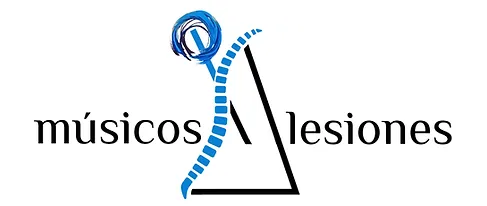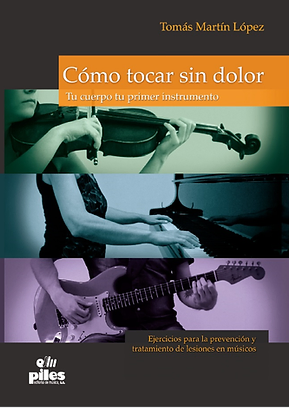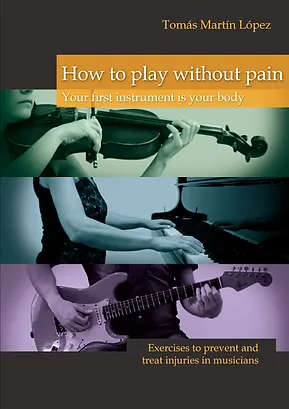Versión Español
«Un maravilloso libro, muy dinámico, de fácil comprensión, que permite tanto al músico como a los profesionales de la salud, tener una mirada mas cercana hacia esta fascinante disciplina que es la música, y aparte de interiorizar en la ergonomía de cada instrumento, plantear ejercicios de calentamiento, elongaciones y fortalecimiento, toca el tema de la forma de aprender y estudiar una melodía, de los estados de exigencia de un músico, el nivel de estrés que desarrollan, por ejemplo cuando conectan con la excesiva competitividad o en la sobre practica, son puntos que muchas veces miramos en menos, pero que en esencia tienen extrema relevantes a la hora de condicionar a un músico en una futura lesión. Somos un todo y este libro reafirmo mi visión y aclaro muchas de mis practicas como profesional de la salud. Muy agradecida con Tomás por este increíble material, y también a sus colaboradores para realizar las ilustraciones.»
English Version
“Many musicians, when looking for a book that can help them to prevent injuries or improve their health, don’t find information that addresses the specific problems they have with their musical instruments. They often complain that there is only general advice and much information about other instruments but not enough about their instrument. Musicians are right, as it is hard to find a book that addresses the problems related to a great number of instruments and that contains detailed and practical information about all of them. Cómo tocar sin dolor, “How to Play without Pain” (unfortunately the book is not translated in to English yet), addresses this problem very well and has one of the most extensive guides on postural issues for each instrument that one can find in the literature. In fact, chapters 2 and 3, those dedicated to posture improvement, are the core of the book. Hundreds of clear photos and more than 200 pages of explanations about incorrect and correct postural attitudes completely guide the reader. There are also practical tests that the musician can do by himor herself to identify the most common postural problems and advice to improve them. So, the stated purpose of this work, “the acquisition of good postural habits,” is clearly achieved in this book.».
JAUME ROSSET-LLOBET, MD, PHD Institut de l’Art. Medicina & Fisiologia Terrassa (Barcelona), Spain
https://www.sciandmed.com/mppa/journalviewer.aspx?issue=1212&article=2139&action=1


